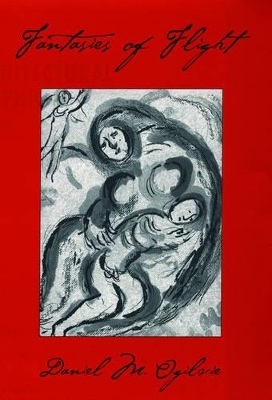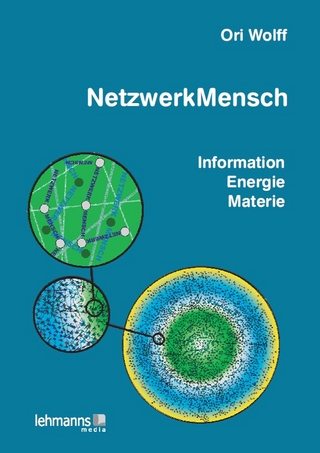
Fantasies of Flight
Seiten
2004
Oxford University Press Inc (Verlag)
978-0-19-515746-8 (ISBN)
Oxford University Press Inc (Verlag)
978-0-19-515746-8 (ISBN)
This book engages readers in life studies of individuals who created images of either themselves or others in flight. Featuring James Barrie, author of Peter Pan, and modern perspectives on self-development and the onset of consciousness, the book endeavors to restore interest in an area of psychology that is starving for new ideas.
Fantasies of Flight invigorates the field of personality psychology by challenging the contemporary academic view that individuals are best studied as carriers of traits. Daniel Ogilvie exchanges a heart-to-heart, case study approach to understanding human behaviour for the current strategies of categorizing and comparing individuals according to their manifest traits. Ogilvie asks and endeavours to answer questions like "What were the psychological conditions that led Sir James Barrie to create a character named Peter Pan?", and "What were the dynamics behind the Marshall Herff Applewhite's conviction that a space ship, hiding behind the Hale-Bopp comet, would rescue him and his Heaven's Gate followers after they enacted a mass suicide pact in 1997?" Answering these questions requires him to resurrect 'old' ways to think about personality and 'old' strategies for studying individuals one by one.
Early in the book, Ogilvie reviews the history of why intensive case studies were discredited in psychology and describes how Sigmund Freud's psychobiographical account of Leonardo da Vinci's fascination with flight inadvertently abetted critics of psychoanalytic psychology. He then performs a partial psychobiography of James Barrie and the origins of Peter Pan, followed by an investigation of Carl Jung, who fashioned the collective unconscious to serve as humankind's link to eternity. Arguing that personality psychology needs to become less insular, Ogilvie integrates information from the disciplines of developmental psychology and neuroscience into a theory regarding the latent needs that both Barrie and Jung sought to satisfy. The theory, including its emphasis on the onset of self and consciousness, is then applied to an array of well-known and obscure individuals with ascensionistic inclinations. Well written and accessible, but complex and scholarly, this volume will restore interest in the investigation of people's inner lives.
Fantasies of Flight invigorates the field of personality psychology by challenging the contemporary academic view that individuals are best studied as carriers of traits. Daniel Ogilvie exchanges a heart-to-heart, case study approach to understanding human behaviour for the current strategies of categorizing and comparing individuals according to their manifest traits. Ogilvie asks and endeavours to answer questions like "What were the psychological conditions that led Sir James Barrie to create a character named Peter Pan?", and "What were the dynamics behind the Marshall Herff Applewhite's conviction that a space ship, hiding behind the Hale-Bopp comet, would rescue him and his Heaven's Gate followers after they enacted a mass suicide pact in 1997?" Answering these questions requires him to resurrect 'old' ways to think about personality and 'old' strategies for studying individuals one by one.
Early in the book, Ogilvie reviews the history of why intensive case studies were discredited in psychology and describes how Sigmund Freud's psychobiographical account of Leonardo da Vinci's fascination with flight inadvertently abetted critics of psychoanalytic psychology. He then performs a partial psychobiography of James Barrie and the origins of Peter Pan, followed by an investigation of Carl Jung, who fashioned the collective unconscious to serve as humankind's link to eternity. Arguing that personality psychology needs to become less insular, Ogilvie integrates information from the disciplines of developmental psychology and neuroscience into a theory regarding the latent needs that both Barrie and Jung sought to satisfy. The theory, including its emphasis on the onset of self and consciousness, is then applied to an array of well-known and obscure individuals with ascensionistic inclinations. Well written and accessible, but complex and scholarly, this volume will restore interest in the investigation of people's inner lives.
PART I: FLIGHT PREPARATIONS; PART II: LIFT-OFF; PART III: GROUND MAINTENANCE AND THEORETICAL ADJUSTMENTS; PART IV: VARIATIONS ON A THEME
| Erscheint lt. Verlag | 15.1.2004 |
|---|---|
| Zusatzinfo | 7 halftones, 3 line drawings |
| Verlagsort | New York |
| Sprache | englisch |
| Maße | 164 x 251 mm |
| Gewicht | 522 g |
| Themenwelt | Geisteswissenschaften ► Psychologie ► Klinische Psychologie |
| Geisteswissenschaften ► Psychologie ► Psychoanalyse / Tiefenpsychologie | |
| Geisteswissenschaften ► Psychologie ► Sozialpsychologie | |
| Geisteswissenschaften ► Psychologie ► Verhaltenstherapie | |
| ISBN-10 | 0-19-515746-X / 019515746X |
| ISBN-13 | 978-0-19-515746-8 / 9780195157468 |
| Zustand | Neuware |
| Informationen gemäß Produktsicherheitsverordnung (GPSR) | |
| Haben Sie eine Frage zum Produkt? |
Mehr entdecken
aus dem Bereich
aus dem Bereich
Information • Energie • Materie
Buch | Softcover (2015)
Lehmanns Media (Verlag)
29,95 €
ein Lehrbuch auf psychoanalytischer Grundlage
Buch | Hardcover (2024)
Kohlhammer (Verlag)
59,00 €
Manual zur Dokumentation des psychischen Befundes in Psychiatrie, …
Buch | Softcover (2023)
Hogrefe Verlag
29,95 €


